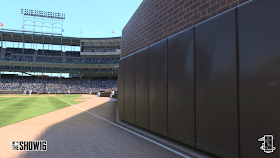A season ago, the Minnesota Twins were among the worst in the major leagues when it comes to bullpens. They didn't strike anyone out, the group struggled to hold leads, and they were generally overtaxed having to work long games pitching from behind. Although many of the arms didn't have full seasons of inefficiency, it was generally a tale of two halves for a good portion of them. No one experienced that narrative more than Glen Perkins.
Making a third straight trip to the All Star Game, Perkins owned a 1.21 ERA in 37.1 innings before the break. He allowed opposing hitters to slash a paltry .188/.217/.246 off of him, while notching 28 straight saves. His 8.7 K/9 was getting the job done, and he looked like the best closer in all of baseball. Then it happened...
Upon the calendar turning over to the second half of the season, the train derailed for the Minnesota native. For the second season in a row, he fumbled down the stretch. Pitching just 19.2 innings for the Twins the rest of the way, Perkins owned a 7.32 ERA and converted just four saves while blowing three. He gave up a .360/.394/.674 slash line to hitters, and surrendered seven longballs. To say it was a debacle would be putting it nicely. For the second year in a row, Glen Perkins had disappeared.
Looking at 2016, there was a real need for the Twins to improve their pen. With many pieces being makeshift a season ago, Terry Ryan and Paul Molitor needed more arms they could count on. Heading into the spring, only Perkins, Kevin Jepsen, and Trevor May were guaranteed to be among the group (May, after he was ruled out of starting).
The Twins addressed their bullpen in much of the same way they did going into the 2015 season. Inviting a handful of non-roster guys to compete for jobs, it was always Fernando Abad that looked the most likely to make an impact. The rest of the 2016 pen will be composed of internal options that have previously performed, and there's a host of high-ceiling guys on the way. What remains the glue of everything however, is just how well Perkins contributes to the group as a whole.
Sure, Jepsen filled in admirably for Perkins a season ago, but expecting a career year from him ago may be a fool's errand. There's reason to believe May becomes an elite reliever, but do we really want to be relying on him to close games for the Twins in the upcoming year? Taking some pressure off of everyone would mean Perkins is able to handle his own.
I have seen concern from multiple different outlets. There's been rumblings of a man struggling to stay in shape, wondering where priorities lie, and notions that it may be time to move on. Where I believe things are trending however, is the third time being a charm.
Glen Perkins is a competitor, he's a realist, and he seems to be one of the most transparent players in the big leagues. There's probably nobody more determined to right his wrongs than Perkins himself. Wanting to turn the tide on two down endings, Perkins has worked through different routines in hopes of putting his body in the best position to withstand the rigors of a full season.
The last two seasons, Perkins has seen his fastball dip down into the 93 mph range. After spending 2012 and 2013 throwing right around 95 mph, the dip could definitely be part of the downfall. What Perkins has done this spring however, is show velocity that rivals the numbers posted at the height of his game. In the previous two years, he's struggled to push the radar gun much above the 92 mph range down in Florida. In his recent outings this season, Perkins has pushed up past 94 mph, a very good sign.
In his best years, Perkins has struck out right around 10 batters per nine innings. Using his wipeout slider, he's had batters overmatched more often than not. When allowing the ball to be put in play, Perkins has always given up roughly a third of those batted balls to fall into the hard contact range. The last two seasons, that number has continued to rise. For Perkins, it's about getting back to what he has been capable of previously.
At 33, it's not about reinventing the wheel for the former Gophers standout, but simply returning to what he's capable of. He needs to keep the ball in the yard, seeing a 2% spike in his HR/Fly Ball rate, and he needs to command at bats once again. As much as staying healthy is a big portion of the equation, the solution simply seems to be returning to a pitching style he once was synonymous with.
There's understandable reason to believe that Perkins health has become a detriment to his effectiveness and think that his best days are behind him. The flip side however is that his issues are correctable and making even minor tweaks are the key to him solidifying an improved Twins relief corps.
For now, the problems that the Twins bullpen and Glen Perkins are facing can't be overlooked. What also is fair to suggest is that the situation shouldn't be overblown either. Expecting Perkins to return to his former self, and produce in a full season, is something I feel comfortable with at this point. The unfortunate reality though, is that it's a narrative the Twins must have play out.
























